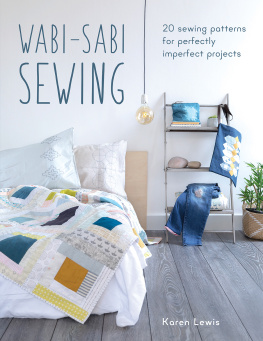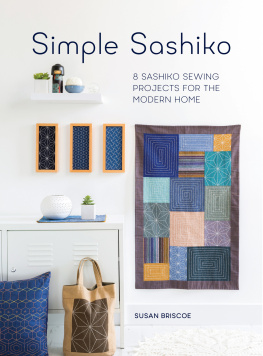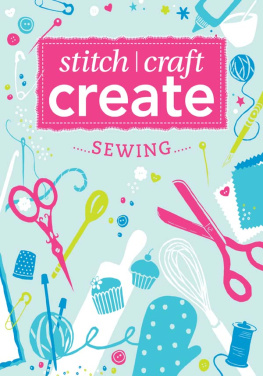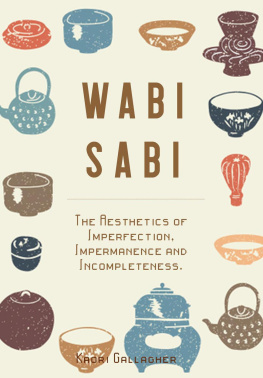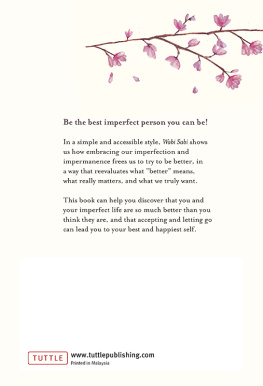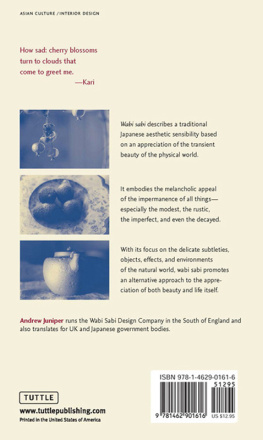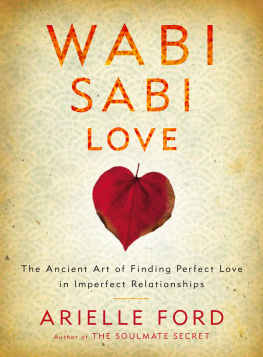Contents
Guide
WABI-SABI
SEWING
20 sewing patterns for
perfectly imperfect projects
Karen Lewis

www.sewandso.co.uk
To Matthew, who helped calm my night-time angst by talking through everything at ridiculous hours. x
CONTENTS
INTRODUCTION
I have always been drawn to scrappy quilts and textiles, the irregularity of hand printing, mix-and-match pottery, the beauty of something not being quite perfect. To me, these elements give objects character and personality. In wabi-sabi terms, those objects are perfectly imperfect.
Wabi-sabi is a Japanese aesthetic ethos that focuses on the imperfect in a positive way, embracing natural imperfections. But, what does wabi-sabi mean to todays crafters? To me, it evokes the idea of using the fabric we already have and using a bit of this and that when we run short, celebrating the results of hunting down mismatched yet treasured scraps. My log cabin quilt makes a feature of incorporating a splash of red where the lengths of blue fabric werent quite long enough. The flying geese in the placemats dont all have to be the same. Grab what fabric you have and see the character come to life with the addition of an unexpected piece.
The variety of fabrics in my projects evokes the wabi-sabi ethos: linens and barkcloth with their textural weave; hand printed fabrics oozing with the character of the artists hand; hand dyed fabrics adding depth and charm with uneven colour.
Hand stitching is a clever way to showcase wabi-sabi. Not only do these stitches vary with each one (well mine do!) but hand sewing one stitch at a time embraces every step of the process. I have paid homage to sashiko stitching as well as simple running stitches. Sashiko is a precise, traditional Japanese embroidery method originally used for repairs. Today it is used as a decorative stitch, and within the aesthetic of wabi-sabi, I have employed a more freeform style.
Visible mending is an aspect of todays make-do-and-mend approach that to me is authentically wabi-sabi. What could be truer than embracing the wear and tear of a much used and loved item through its repair? The treatment of the jeans in the visible mending project can be incorporated into any manner of worn items to embrace them in a decorative way.
Wabi-sabi suits me. My stitches arent always even. My seams arent always straight. But I embrace the character of the fabrics and imperfections, and I hope you will too. Most of these projects are designed from the starting point use what you have. You dont need matchy matchy brand-new fabrics. Your favourite pieces, no matter how small, will be full of character and perfect for your project. Or in the words of wabi-sabi perfectly imperfect.
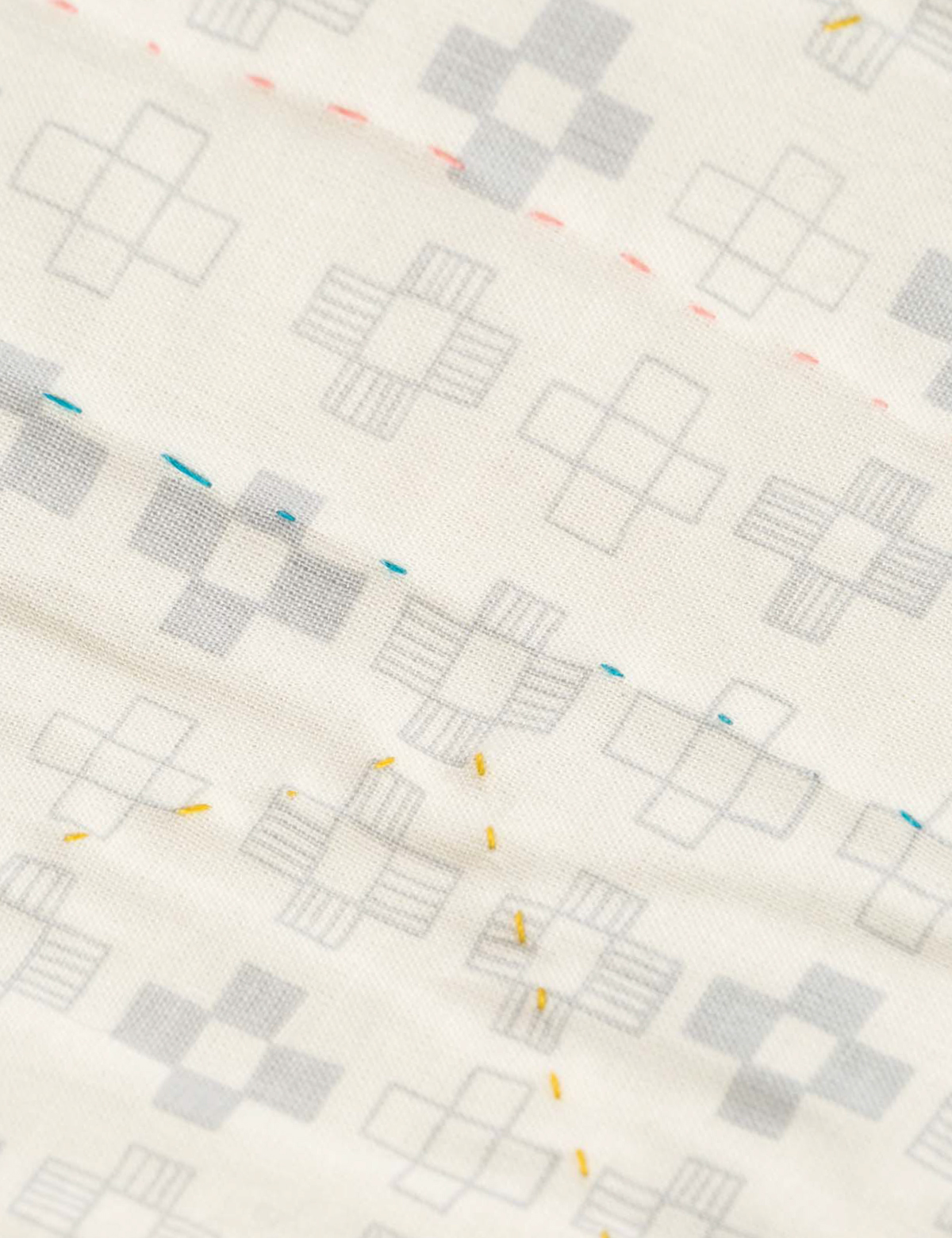
TOOLS & MATERIALS
This book doesnt use any particularly fancy or special equipment. When it comes to fabric, these projects are an excellent excuse to raid your fabric stash and use up all those special scraps youve been saving for a rainy day!
ESSENTIAL TOOLS
- Sewing machine: You need a 14in seam foot, and a zipper foot for any project that includes a zipper.
- Thread: Use a good quality neutral 100% cotton thread for both machine and hand piecing. I love Aurifil 50 for its quality and colour selection.
- Pins: For both piecing and basting. Glass-head pins look pretty, and normally a pin that goes to extra lengths to look good is also high quality!
- Scissors: Fabric shears, small sharp embroidery scissors, and paper scissors for cutting templates.
- Self-healing cutting mat: The biggest one you can afford and have space to accommodate.
- Rotary cutter and spare blades: Essential for cutting patchwork fabric. Again, get the best you can afford; I like an Olfa with its easy-to-change blade.
- Quilting rulers: A non-slip 6in x 24in ruler with angles and 18in markings is my choice, along with a small ruler, and a square for trimming blocks.
- Fabric pencil: For marking quilting and templates, and making removeable marks on fabric.
- Embroidery thread: For hand quilting and sashiko stitching I use Aurifil 12 or Aurifil Lana wool which adds a beautiful texture to your stitches. Lana wool isnt as hard wearing, so be mindful if you are using it for an item that will be heavily used or washed.
- Hand sewing needles: My needle of choice is Jeana Kimballs Embroidery/Redwork size 9. It is long and super sharp. Traditionally hand quilting needles are shorter but I prefer a longer needle.
- Basting pins/basting spray: I find basting my quilts preferable with a spray; I use 505 Adhesive.
- Seam ripper: Every sewists best friend!
- Iron and ironing board: Preferably a steam iron to smooth out creases in your fabric.
MATERIALS
- For piecing: I have used a variety of quilting cotton, denim, linen, double gauze and barkcloth in my projects. I love the textures that a variety of different weight fabrics give, and mixing them together in a project adds pleasing interest. I have also used hand printed and hand dyed fabric, both of which glow in handmade pieces.
- Wadding (batting): My favourite wadding is Heirloom Premium Cotton for no other reason than I can buy it in a big roll! It does have a nice soft feel, and the cotton is natural and breathable. You can use a thinner wadding for wall quilts.
- Ribbon: As this is used for tie-fastenings and closures, choose a type that is hard wearing enough not to fray.
SPECIALIST TOOLS & MATERIALS
The following make hooks and handles for various projects in the book. They add a professional touch, but fabric alternatives are always available!
- Rivets and rivet tool
- Eyelets and eyelet tool
- Leather strapping

LIVING
What better way to introduce wabi-sabi to your life than through your everyday living space. Nestle in with a cushion or quilt, put your feet up, place your mug on a coaster, and admire some handmade wall art. Let the ethos of perfectly imperfect reign all around.
Hexagon Harmony
FINISHED SIZE: 14in x 22in
I have started many English Paper Piecing (EPP) projects, only to run out of time. This cushion is the answer big enough to get your teeth into without losing sight of the finish line! The other big plus is that you can use all those tiny scraps you have hoarded away, as no two hexies need to be the same. You will be cuddling up on the sofa with the finished results before you know it.
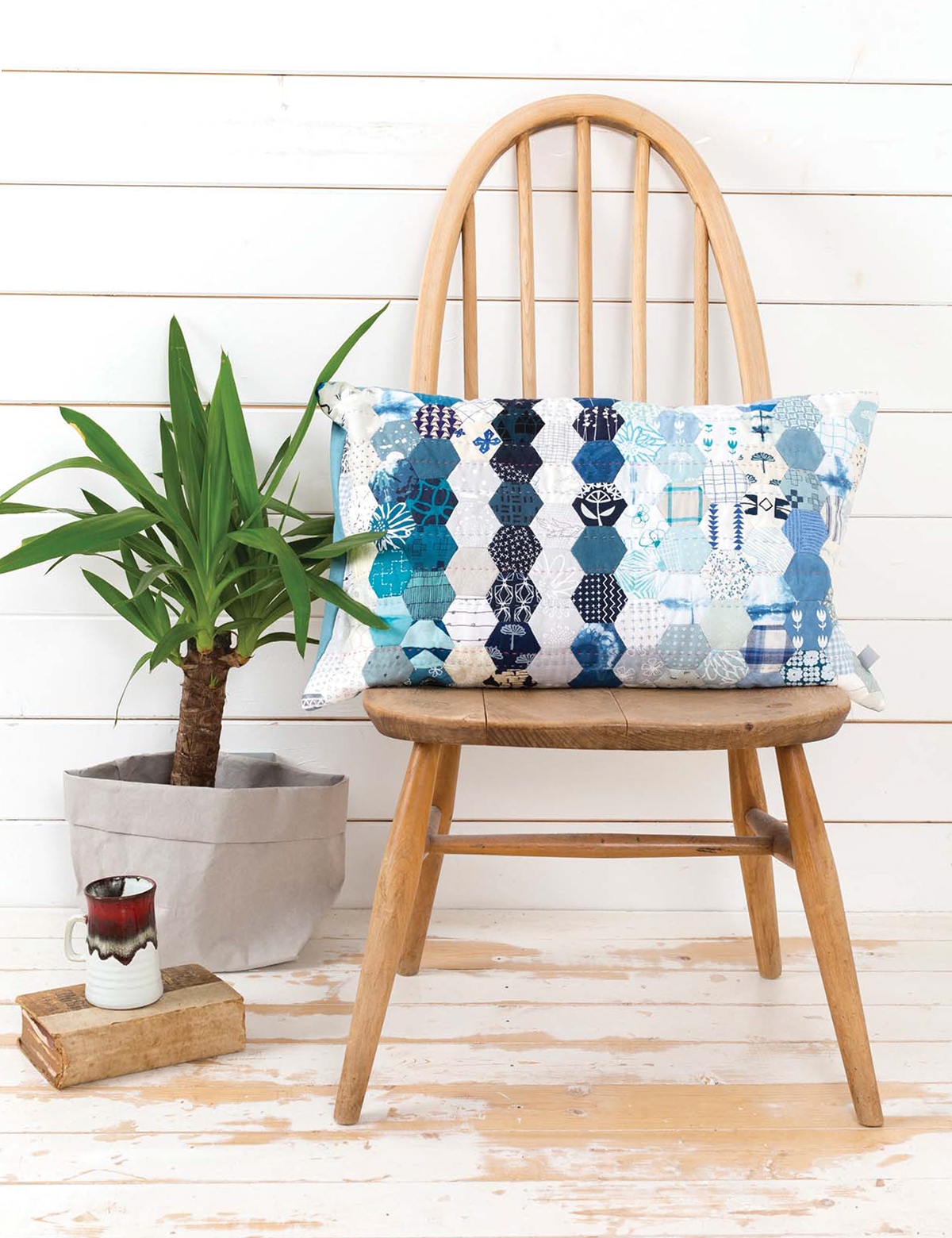
Materials:
- Approximately 34yd in total of fabric for the cushion front
- 12yd fabric for the cushion back
- 212in x 30in for binding
- 18in x 28in wadding (batting)
- Embroidery thread for hand quilting (optional)
- 14in x 20in cushion pad
CUTTING
Cut out the fabric as follows:

